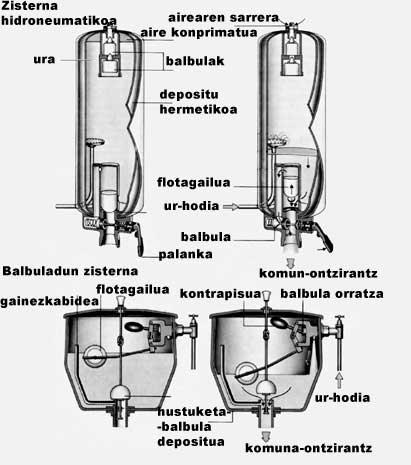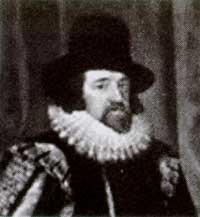Bathroom
1996/09/01 Irureta Azkune, Onintza Iturria: Elhuyar aldizkaria
The toilet was invented in 1589, of course the type of toilet we know today, that is to say, the one that has a cistern for the discharge of water to the toilet and that is attached to the pipe of extraction of dirty water. From the hand of British Lord John Harington came an invention as curious as indispensable. This British lord was not in any way; Queen Elizabeth I considered her son and worked in her court. Mr. Harington worked as a creator and inventor, but he was not known for that profession. The nobility wrote and translated writings and books for Queen Elizabeth I.
We could say that this man, who had studied in the best schools in England for a season, led them to two jobs. On the one hand he translated the stories of an Italian poet and divided them among the women of the court. Soon came the penalty: Isabel I expelled her from court. While translating the scandalous tales that caused the queen's anger, the Italian poet inspired somewhere and began working with the cistern.
First bath
Mr. Harington, very fond of the royal palace, asked that they also build a large house for him. In 1589, the result of intense reflection and work, he set up a bathroom in his new home. Eventually the queen forgave her son to translate the shameful tales and so one day she visited Mr. Harington.
It was 1592 and for the first time a British monarch used the invention of Mr. Harington. Mr. Harington was very pleased because no one had the gadget at home, not even the queen herself. The Queen's palace did not last long without this urgent discovery. In 1597, in Richmond County, near London, in the Queen's Palace, the nobleman installed the second bathroom.
Harington invented the toilet to accumulate water with a cistern and operated with a valve. The valve allowed the discharge of water to the toilet. The British nobleman recommended to use the cistern twice a day, that is, twice a day.

The XVI was a great invention. In the eighteenth century thanks to Mr. Harington, but so far we have only counted two bathrooms: that of his house and that of the palace of the queen. The toilets just began to expand and most continued to use the soil hole. Being a traditional orifice system or a new toilet system, dirty water was collected in a deep pit, called a black well.
The technological evolution of sewage channeling has been very slow and sixteenth century. This cistern system was invented by the writer and translator of the court in the nineteenth century, with hardly any changes. It remained until the end of the 20th century.
In the 1770s Alexander Clummings made the first toilet to reach the public in London. In the following century, in 1857, Joseph Gayetty softened and made bathroom use more pleasant: he invented toilet paper. Since Harington conceived the bathroom over the centuries, numerous inventors have tried to improve and adapt the bathroom. XIX. At the end of the 20th century health engineer Thomas Crapper improved the toilet cistern. The new cistern unloaded a lot of water in no time.
Today, at least in developed countries, in all households we have toilets and in many cases more than one. Our wastewater evacuation system is the most widespread and is based on the siphon effect. Some carry the tank up and others just above the toilet.
Water route
When we give to the bathroom bomb we hear noises and noises of water. But surely we have never considered the path of water. Although we do not see it, every time we throw at the pump there is a surprising fact: the water goes up the tube and then goes down. This task is due to the siphon effect.
The first step to starting this siphon system is, of course, to give the bath pump. With the launch of the toilet pump the water stored in the cistern is intended to be sent through the toilet pit. But, as we said before, the water does not go directly down. The siphon tube is above the water level, so somehow the water has to rise. When we give to the pump we move the disc and the water will come out from bottom up in the tube. Due to the atmospheric pressure supporting the water from the cistern, all the water from the cistern will continue in the same direction, starting up and then down.
Water drops down the hole. The water goes and the cistern is emptying. The cistern has been left without cisterns and now has to be filled again. The filling water in the cistern comes from the duct that is usually next to or behind the toilet. In this pipe the water is under pressure and will only be inserted into the cistern once the valve is opened. But how does the valve know when to let water pass?
The float warns the valve. As the water comes down from the cistern, the float also goes down. When the water level is below the base of the siphon, the air enters the base of the siphon and is blocked. At that time the float is lowered to the sufficient level and the valve opens. Water will begin to enter the cistern. As the tank fills up, the float will also increase. With the float rising, the valve begins to close and the water will decrease until the valve is closed. The valve and the float are therefore two very important elements that must be coordinated with each other forming a self-regulation mechanism. In short, the correct drainage and filling of the tank depends on both components.
Now we have the cistern full of water. After filling the toilet, we just need to pull the pump and the water will resume the tour we just mentioned.
- Between 1856 and 1875 the first sewerage network for the treatment and conduction of wastewater was built in London. A 133-kilometer-long sewer was introduced and 454 million litres of dirty water passed through the network daily.
- In New York sewerage, 6.3 billion liters of dirty water are spent daily, doubling the day it rains.
- A conventional tank pours 7.5 litres of water each time we pump.
- When we pull the toilet pump, each person uses an average of 45 liters of water a day.
Thanks to compressed air
It is also the second way to evacuate dirty water. However, this system is not well known and is not used in our homes. This type of hydropneumatic tanks works with compressed air. We will have a large water tank in polyethylene, which is airtight. Given the lever located at the bottom of the tank, we open the passage to water and the water moves to the toilet.
The start of water fall will cause the descent of the two valves located at the top of the tank. The valves let air in. Therefore, the water has gone to the toilet and the reservoir has begun to fill with air. When the water comes out again we give the lever, this time to close the step. The float goes down and then starts the water inlet through the pipe. As the tank is filled with water, the air is compressed and the two valves located at the top of the tank close the air inlet. Now, the tank is almost full of water and compressed air.

Gai honi buruzko eduki gehiago
Elhuyarrek garatutako teknologia





